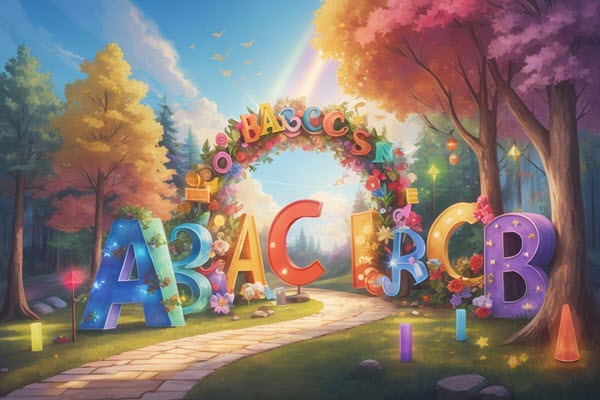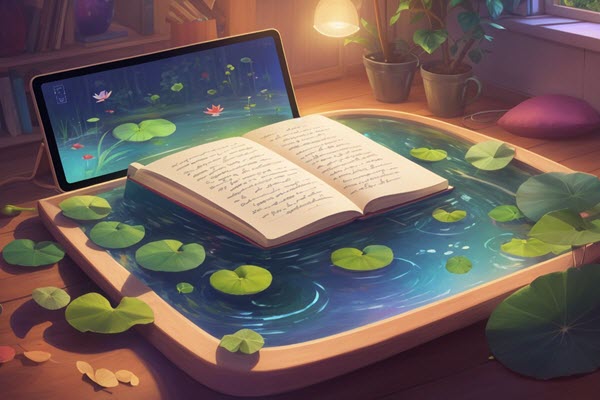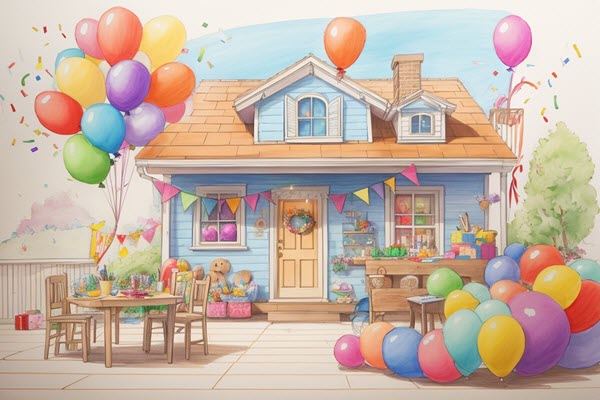The Best Way to Teach Letter Recognition: Laying the Alphabetical Foundation
Every child’s journey into the realm of literacy begins with a whimsical dance of lines and curves, the alphabet.
It’s a fascinating sight, seeing a child’s eyes light up with recognition as they point to a letter, a tangible symbol of a sound they’ve been mimicking. This initial acquaintance with letters is more than just child’s play; it’s the cornerstone to a lifelong literacy journey.
As we delve into the best way to teach letter recognition, I recall a chilly autumn afternoon, the sky painted in hues of dusk, when I watched a child in my neighborhood, with her tiny finger, trace the letter ‘A’ she found on a faded advertisement board. Her eyes sparkled with the joy of discovery as she squealed, “A for Apple!” to her mother.
This wasn’t just a fleeting moment of childhood curiosity, but the spark of recognition, the dawn of literacy.

The art of recognizing letters is akin to handing our children the keys to a vast kingdom of knowledge.
This post unfolds the tapestry of methods and strategies that can nurture this crucial skill in your young ones, making the learning journey not just effective, but immensely enjoyable.
Through the unfolding paragraphs, you’ll traverse through the practical and enjoyable ways to introduce letters to your little ones, ensuring they step onto the path of reading with enthusiasm and confidence.
The Essence of Letter Recognition
Navigating the waters of early literacy might seem like steering through an uncharted territory. However, once you understand the core components, the journey becomes not only manageable but also exciting.
Let’s break down the process of letter learning into four main parts: recognition, naming, letter-sound knowledge, and writing.
Letter Recognition
This is the stepping stone where children learn to identify letters by their shapes. It’s like meeting new faces and getting to know them by their features. Each letter has its unique shape, and this stage is all about familiarization.
Letter Naming
Now that we’ve met the letters, it’s time to call them by their names. This stage is about associating the shapes of the letters with their names, like calling a round shape ‘O’ and a snake-like shape ‘S’.
Letter-Sound Knowledge
Every letter has a sound it makes, a voice of its own. In this part, children learn the sounds associated with each letter. It’s like knowing that a dog says “woof” and a cat says “meow”. This stage is crucial as it lays the foundation for phonics, which will come in handy when they start blending sounds to read words.
Letter Writing
This is where children learn to write or trace the letters. It’s about getting their little hands moving to form the shapes of the letters they have come to recognize and name.
Now, onto the fascinating part, the developmental timeline.
Children are amazing learners, and their ability to soak up knowledge is astounding.
Around the age of 2 or 3, many children start recognizing the letters in their name. It’s a thrilling phase as they begin to see these familiar shapes in books, on signs, or even on their favorite cereal box.
By the age of 4, many can identify all the letters of the alphabet and are starting to connect letters to their sounds. This is a critical period as the foundation for future reading skills is being laid.
Understanding this timeline and the different components of letter learning empowers you, making the quest of teaching letter recognition a rewarding adventure. With each day, as your child discovers the magic nestled within the curves and lines of the alphabet, you are opening doors to a world brimming with words, stories, and endless possibilities.
Unveiling Letters to Children: A Balanced Approach
Embarking on the journey of letter recognition with your little one is akin to unveiling a treasure chest filled with magical keys, each key opening doors to new realms of understanding.
Here’s a balanced approach to make this unveiling not only fruitful but also filled with fun and laughter.
A Personal Touch: Starting with the Familiar
Every child has a special bond with their name. It’s their identity, their call to attention.
Starting with the letters in their child’s name adds a personal touch to this learning journey. By introducing them to the letters that make up their name, you’re connecting this new learning experience to something familiar and cherished. Gradually, you can introduce them to other frequently used letters, expanding their knowledge at a comfortable pace
Uppercase and Lowercase: Meeting the Letter Family
Letters have families too!
Meet the uppercase letters, the big siblings, and the lowercase letters, their little counterparts.
It’s important to introduce children to both families as they each play a distinct role in the literacy narrative. Uppercase letters are usually easier for children to recognize due to their distinct shapes, and they appear at the beginning of sentences and proper nouns. On the other hand, lowercase letters make up the majority of what we read and write every day.
By acquainting children with both, you’re setting a solid foundation for their literacy journey ahead.
One Letter at a Time: Addressing the Look-alikes
Some letters can be tricky and may resemble each other, like the playful twins ‘p’ and ‘q’ or the mirror images ‘b’ and ‘d’. It’s wise to introduce potentially confusing letters one at a time to avoid a mix-up.
Teaching these letters with a dash of fun, using playful stories or engaging visuals, can help clarify the differences and make the learning memorable.
Structured Learning: A Recommendation
The journey of letter recognition is joyous, yet a structured approach can ensure it’s also effective.
The Children Learning Reading program is a fabulous companion on this journey. With its well-structured lessons and engaging activities, it aims to make letter recognition a joyful and rewarding experience for both you and your child.
It’s like having a gentle guide, leading you through the garden of letters, helping you and your child notice and appreciate every flower along the way.
Embarking on the path of letter recognition with a balanced approach ensures that your child enjoys the learning process while also building a strong foundation for future literacy skills.
With a mix of
- personalization,
- understanding the letter families,
- addressing confusing letters gently,
- and having a structured roadmap like the Children Learning Reading program
You’re not just teaching letters, but you’re nurturing a budding reader with love, patience, and the right resources.
And remember, every letter your child learns is a stepping stone towards a world rich with words, ideas, and endless stories waiting to be explored.
Activities that Ignite the Alphabetical Spark
Unveiling the magic of letters to your little one can be an enchanting adventure, filled with exciting activities that not only teach but also entertain. As you step into this colorful world, you’ll find activities that cater to different aspects of learning.
Let’s delve into some activities that can ignite the alphabetical spark in your young explorer.
Visual Perception Activities: Seeing the Letter Magic
Visual perception is about seeing and recognizing different shapes and colors. It’s like identifying a circle from a square or a red from a blue. In the world of letters, this skill helps children distinguish between different letter shapes.
-
Puzzles: Letter puzzles are a fantastic way to introduce the shapes of letters. As they fit pieces together, they’re essentially solving a fun mystery of shapes.
-
Sorting Activities: Create a little game where your child sorts letters into different bins or on different colored sheets of paper. It’s like a colorful party where each letter finds its group.
-
Flashcards: A quick flash of a card, and a moment of recognition. Flashcards are a fun and quick way to reinforce letter shapes.
Auditory Perception Activities: Hearing the Letter Sounds
Letters are not just shapes; they come alive with sounds. It’s about hearing the ‘sss’ of ‘S’ and the ‘mmm’ of ‘M’.
-
Reading Aloud: When you read to your child, emphasize the sounds of the letters. It’s a cozy time of learning wrapped in stories.
-
Singing Alphabet Songs: There’s music in letters. Alphabet songs are a joyous way to introduce the sounds of letters.
Visual-Motor Activities: Drawing the Letter Lines
Visual-motor activities help children coordinate what they see with their hand movements. It’s all about tracing and writing the magical symbols – the letters.
-
Letter Tracing: Provide tracing sheets for your child to practice. It’s like going on a mini-adventure, following the lines of each letter.
-
Writing: With a crayon or a pencil, let them draw the letters. It’s their own artwork of learning.
Memory-Boosting Activities: Remembering the Letter Magic
Memory helps in recalling the shapes and sounds of letters. It’s about storing the magical keys in their treasure chest of knowledge.
-
Sing-a-longs: Singing along to alphabet songs not only reinforces the letter sounds but also imprints them in memory in a fun, musical way.
-
Practicing the Alphabet: Regular practice, maybe a little daily letter adventure, helps in remembering the letters.
These activities are not just learning tasks; they are the seeds of curiosity and excitement about letters. They’re the playful steps toward the enchanted forest of literacy, where every letter is a friend, waiting to tell its part of the story.
As you explore these activities with your child, you’ll see the world of letters unfold through their eyes, filled with wonder, laughter, and endless learning joy.
Integrating Technology in Letter Recognition
In today’s digital age, technology plays a friendly companion in the journey of teaching letter recognition to our little ones.
Educational apps and online platforms are like virtual playgrounds where children can explore the alphabet in a fun and interactive way.
These digital tools often come with colorful graphics, playful sounds, and interactive games that make learning engaging. They take your child on a virtual adventure where every letter comes to life, dancing and singing its way into your child’s memory.
Interactive learning is the core of these digital platforms.
It’s not just about seeing and hearing; it’s about touching, dragging, and clicking. It’s a hands-on experience that makes letters more tangible, even in the digital space. Your child isn’t just passively absorbing; they are actively participating, which is a powerful way to learn.
This blend of fun and learning is what makes technology a worthy ally in teaching letter recognition.
And the good news? There’s a variety of resources available.
For a handpicked list of excellent options, do check out this compilation of the best learning to read programs for kids. It’s a treasure trove of tools that can add a sprinkle of digital magic to your child’s journey into the world of letters.
Melding Fun with Learning: A Parent’s Role
Delving into the world of letters with your child is not just an educational expedition but a fun-filled adventure waiting to unfold right in the cozy corners of your home.
As a parent, you play the role of a gentle guide, adding splashes of joy and encouragement along this path of discovery.
Whisking Fun into Learning
Who said learning can’t be fun?
With a dash of creativity, every letter can be turned into a playful companion.
-
Alphabet Treasure Hunt: Turn your living room into a treasure island, with letters hidden in unexpected nooks. The gleam in their eyes as they find a letter is priceless!
-
Letter Cooking: Cookie cutters aren’t just for cookies. They can shape sandwiches, pancakes, or homemade play dough into letters too. It’s a delicious way to learn!
-
Alphabet Dress Up: Have a little fashion show where each attire represents a letter. ‘A’ for apron, ‘B’ for boots, and so on. It’s a playful parade of letters!
Real-life Letter Magic
Every day is a chance to meet letters in the real world. They’re on street signs, labels, and even your child’s cereal box.
-
Grocery Store Adventure: The grocery store is a live alphabet book. Point out letters on product labels, and let them find items that start with a certain letter.
-
Outdoor Letter Safari: Take a walk and spot letters in the wild – on license plates, billboards, and shop fronts. It’s a real-world letter safari!
Crafting a Nurturing Environment
Your encouragement is the sunlight that helps the seed of letter recognition grow in your child.
-
Celebrate Little Wins: Every letter recognized is a big win. Celebrate it with cheers, claps, or a little happy dance. Your joy fuels their enthusiasm to learn more.
-
Be Patient: Sometimes, it takes a while to grasp a tricky letter. Your patience and gentle encouragement will make them comfortable and eager to keep trying.
-
Create a Cozy Learning Corner: A little corner with a comfy chair, good lighting, and alphabet books or toys can become their favorite learning spot.
Sharing Stories
Sharing stories of other parents or your own journey can be both comforting and inspiring. It’s like being a part of a big, warm community, all venturing through the ABCs together.
And remember, every day brings new chances to explore letters in fun, everyday scenarios, making learning a delightful part of daily life.
Your role as a parent isn’t just about teaching.
It’s about igniting curiosity, fostering a love for learning, and weaving a warm, supportive environment where your child feels cherished and motivated to explore the magical world of letters.
With every letter recognized, you’re not just building literacy; you’re creating beautiful memories filled with laughter, love, and learning.
Conclusion
As we circle back to the onset of our discussion, we rekindle the essence of the whimsical dance of lines and curves, the alphabet, that beckons the young minds into a realm brimming with imagination and understanding.
The journey through letter recognition is not merely an educational endeavor; it’s a tapestry of joyful discoveries, shared giggles, and the tender bond that deepens with every letter uncovered.
- We’ve navigated through the core components of letter learning, emphasizing the pivotal role of recognition, naming, letter-sound knowledge, and writing.
- The tailored approach of unveiling letters, starting with the ones in your child’s name, ushering them gently through the families of uppercase and lowercase letters, and addressing the tricky twins of the alphabet, lays a solid foundation for their literacy voyage.
- We’ve also danced through a garden of activities that blend learning with laughter, explored the digital companions that add a sprinkle of interactive magic to letter recognition, and delved into the nurturing role you play, making this journey a delightful expedition.
Now, as you stand at the threshold of this enlightening adventure, remember, every letter your child recognizes is a leaf turning over, revealing a world filled with stories waiting to be told and heard. The Children Learning Reading program is a trusted companion that offers a well-structured pathway through this garden of letters.
It’s about making each step on this path a memorable narrative of love, learning, and laughter.
I invite you to delve deeper into this literacy journey, share your experiences, your triumphs, and the playful challenges in the comment section below. Your stories are the threads that weave this community of enthusiastic parents together.
Also, explore the discussion on phonemic awareness versus letter sound correspondence to further enrich your understanding, as we all stride together on this enlightening path of nurturing budding readers.
The realm of letters is vast and inviting, and every day is a new page waiting to be written in your child’s book of literacy.
With a heart full of excitement and hands ready to explore, step into this journey, making each letter a memorable melody in your child’s heart.

Natalie is a full-time blogger and former elementary school teacher who specializes in helping parents teach their kids to read. With a qualification in Early Childhood Education, over 7 years of experience in education, and a passion for literacy, Natalie provides practical tips, activities, and resources for parents looking to support their child’s learning-to-read journey. She is the proud mom of two young readers and loves sharing her knowledge and experience with other parents. Natalie enjoys spending time with her family, reading, and exploring the great outdoors when she’s not blogging.



